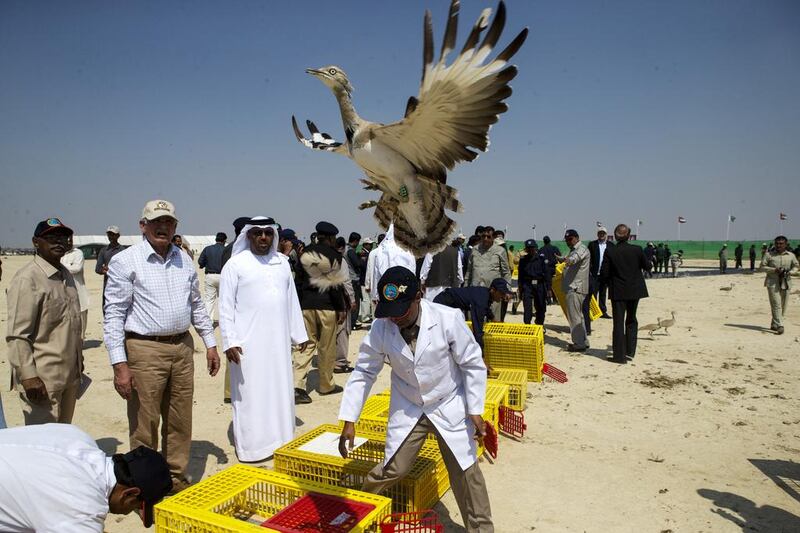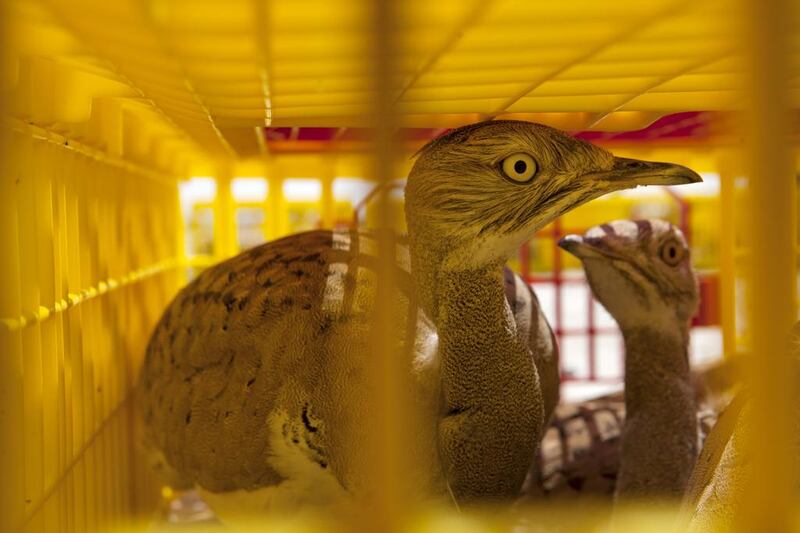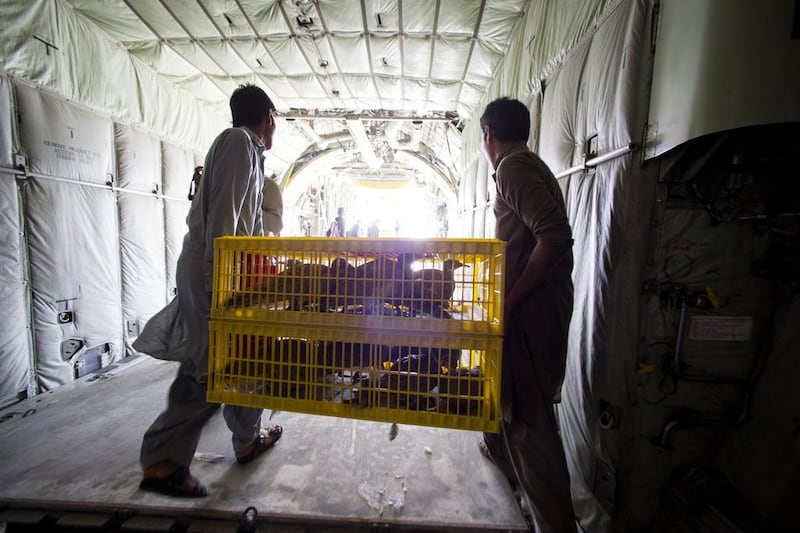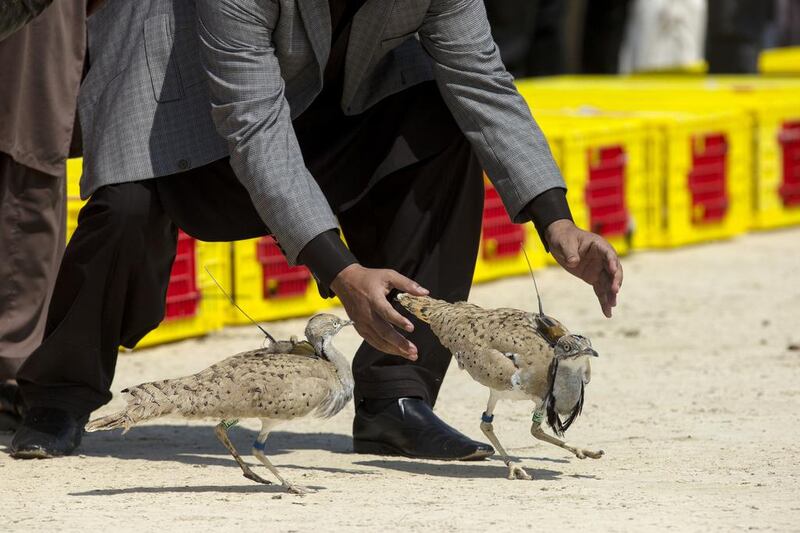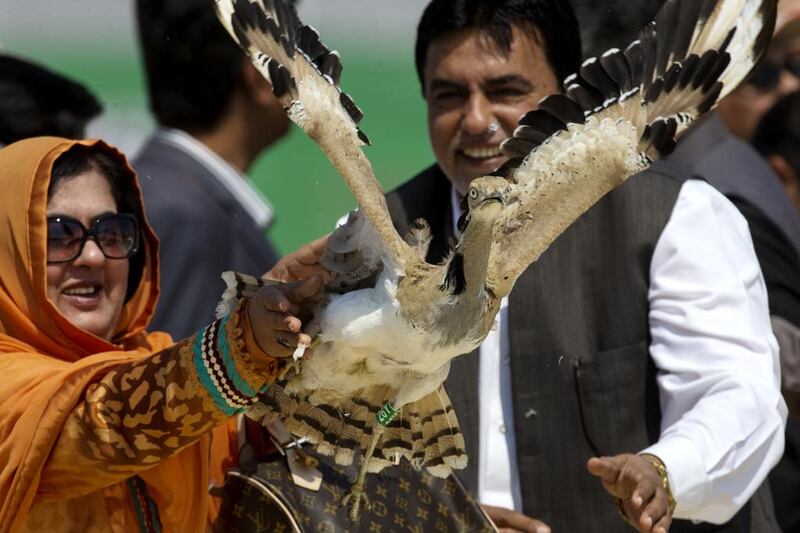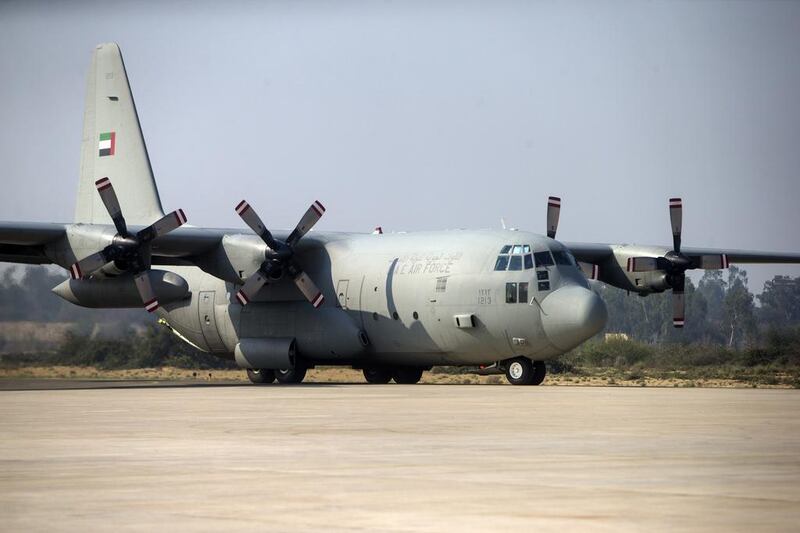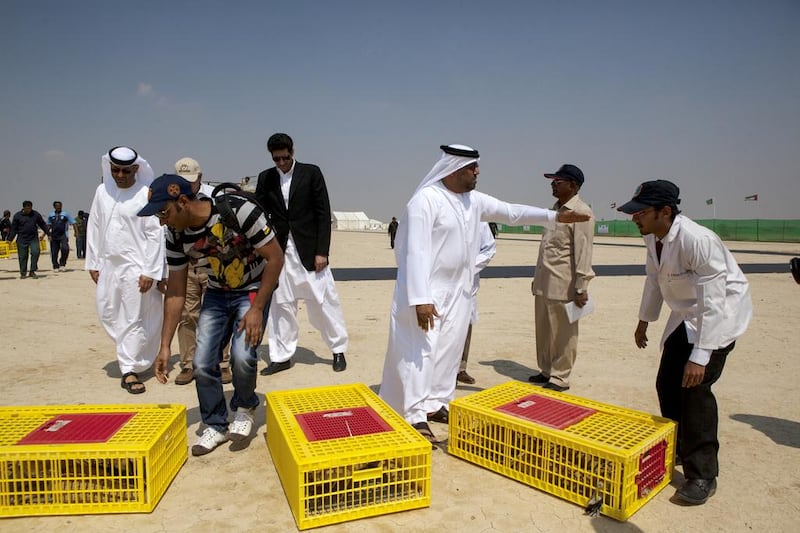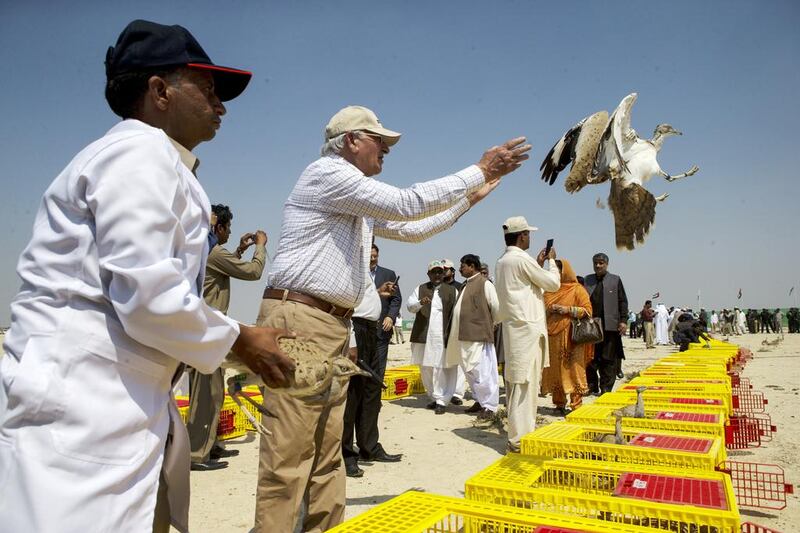Even for a bird well known for its ability to migrate across vast distances, it was a remarkable feat of aviation. From Abu Dhabi to the deserts of the Punjab, a journey of more than 2,000 kilometres and completed in less than four hours.
Of course, it helped that this particular flock of Asian houbara bustard could hitch a lift from the UAE Air Force. And so it was that one morning last week that the tranquility of Bahawalpur airport, ringed with brightly blooming roses and pots of dahlias, was disrupted by the ear-splitting arrival of a grey C-130 Hercules transport aircraft with the UAE flag on its tail.
Even before the aircraft had stopped, the rear ramp was opening to reveal a hold filled with stacked yellow crates, each containing six birds – 600 adult Asian houbara in total, apparently unperturbed by their epic voyage. If the birds seemed a little wide-eyed, it was only because this was their normal expression.
This was the next stage in the conservation project of the UAE and Pakistan to improve wild stocks of the Asian houbara, and involving the International Fund for Houbara Conservation (IFHC) in both countries.
It began last November, at the National Avian Research Centre in Sweihan, where the birds ready to be released were identified and prepared for transport.
From Bahawalpur, a small city surrounded by wheat fields and sugar cane, they would be taken by road to their new home at the Lal Souhanra National Park, much of which is part of the Cholistan Desert and ideal terrain for the houbara to live and breed.
Within half an hour of their arrival in Pakistan, the crates were being loaded onto a row of brightly painted lorries, the elaborately scrolled bodywork barely clearing the underside of the C-130’s tail.
For the next two hours, they slowly made their way in a convoy protected by armed guards, past farms and Punjabi villages, navigating dirt tracks and packed carts pulled by camels, until the road narrowed to a sandy path flanked by dense undergrowth and trees that marked the park’s entrance.
The UAE and Pakistan have invested much in preserving the Asian houbara, which is visibly distinct from the North African variety in its colour and markings. Birds range from Central Asia, retreating from the bitter cold of a Mongolian winter, south and east as far as the Arabian Peninsula, where they are central to Bedouin lore and falconry tradition.
The historic links between the emirates and this part of the Punjab go back generations. The airport at Bahawalpur was built with assistance from Dubai, with the Sheikh Rashid Terminal named in honour of the late Ruler of Dubai.
Barely 200 kilometres, at Rahim Yar Khan, Sheikh Zayed International Airport is named after the late President of the UAE, who frequently visited the region.
In Pakistan, the issue of houbara conservation has recently been politicised in parts of the media, with claims that some Arabian Gulf royal families – although not those of the UAE – have exceeded the falcon hunting quotas legally allowed by the Pakistani authorities. There have been calls for even limited houbara hunting to be stopped.
In fact, numbers seemed to have remained stable for the past two decades and the bird is not listed as endangered, says Mukhtar Ahmed, a retired brigadier who is president of Houbara Foundation International Pakistan.
Still, with no reliable census, a more scientific approach is being taken by conservationists. The 600 houbara flown in from Abu Dhabi are the result of artificial insemination but their bloodline, says Brig Ahmed, is “pure Pakistani”.
Local varieties, he says often stay in the same area or only migrate short distances. “So whether they will stay here and breed here or migrate remains to be seen.”
To further protect the Abu Dhabi birds, a compound, nearly 16 kilometres long and five kilometres wide has been created out of an area of desert dunes and scrub. It is surrounded by a high wire fence to keep out natural predators and guarded as a deterrent to smugglers, who capture live houbara to sell overseas – as well as being used for hunting, the bird’s meat has an erroneous reputation as an aphrodisiac.
With these precautions, says Brig Ahmed, the 600 released last week have a good chance of survival. “Normally in the wild, we would expect 20 per cent to survive in nature after one year, but our expectation is a survival rate of up to 80 per cent.”
The importance of last week’s release was underlined by their reception in Pakistan. A huge temporary marquee was erected in the desert, with the approach road lined with alternate UAE and Pakistani flags and giant photographs of the leaders of both countries.
Along with local dignitaries, dozens of Pakistani media were invited to watch the release.
Majid Al Mansouri, a board member of the IFHC and part of the UAE team, tells reporters: “Pakistan has done a lot for conservation and we are happy to be partners in that.”
Oblivious to all the attention, the houbara waited quietly in their containers, lined up facing the desert. First, a large number of endangered chinkara deer, from the Sheikh Zayed Deer Breeding Centre at Rahim Yar Khan, were set free. The authorities planned to release 250 chinkara, but in the end, the total was 252. Two fawns were born overnight, a good omen.
All of the Abu Dhabi houbara have been ringed, and 30 fitted with GPS trackers to study their movement in the coming months. They can easily be identified by the aerials on their backs.
The release will be test of, or perhaps a testimony to, the bird’s instincts. Mohamad Saleh Al Baidani, the director general of the IFHC, explains that because they are raised in captivity, this will be the first time for them to properly try their wings.
“They are very clever birds and adapt quickly,” says Mr Al Baidani. “They have the instinct for survival.”
Finally, all is ready. The first bird was taken from its crate and gently tossed into the air. It flutters a few feet and then settles on the baking sand, looking around curiously. Its brothers and sisters are more adventurous. Soon, the sky is filled with dozens of wheeling houbara, testing their wings and enjoying life in their new home.
After many hours in confinement, the first act of many of the birds as they take flight is as inevitable as it is entirely natural. Along with drifting feathers, the air is filled with the unmistakably pungent odour of houbara droppings.
Mr Al Baidani, immaculate in a white kandura, has seen this before and knows what to expect by standing well away from the flight path. “It is very difficult to clean,” he confides.
jlangton@thenational.ae
